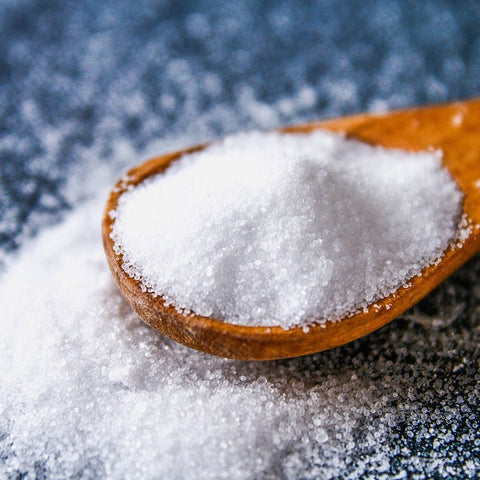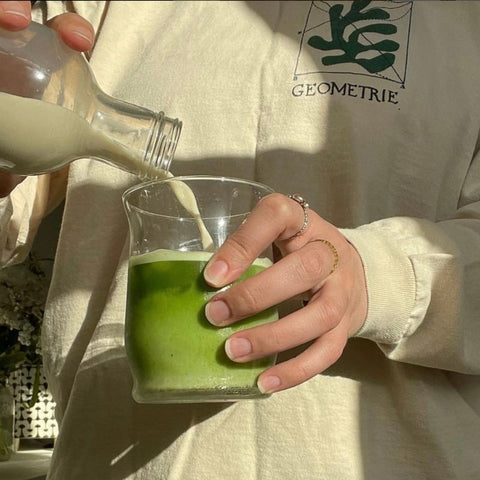Want to know where our matcha comes from? Carolyn, our founder, and CEO here at Copina Co., recently took a trip to Japan to visit the farms that grow and supply Copina Co.’s matcha. We are so excited to share with you what we learned about this amazing plant (and tasty drink).
Copina Co. uses only high-quality Japanese matcha in our vegan collagen support matcha blend. Our matcha is grown in a region between Tokyo and Kyoto in Japan. You can see Carolyn in action in Japan on our Instagram.
All About Matcha
One amazing detail we like to highlight about the trip: matcha is grown in the shade! That’s right, the field in the pictures (behind Carolyn) is covered with shade a month before May harvest time to increase chlorophyll and l-theanine of the sweet and delicate matcha that we use in our vegan collagen support matcha blend. We feel so grateful to get to see how our matcha is grown and cultivated for our matcha blend, here are some other fun things we learned during our time in Japan.
Something you might not have known is that steeped green tea and matcha tea are actually from the same plant. What makes them different is how they are cultivated and processed. One of the differences we already mentioned is that matcha leaves are grown in the shade for the last growing cycle, whereas green tea leaves are not. During this growing cycle, matcha leaves turn color into a bright jade green due to the shading process. Matcha in Japan is typically harvested in May, so for about 30 days starting in early April, the matcha tea plants get shades stretched over them. Some companies use a dark black screen and others use a bamboo screen, but both accomplish the same result: increasing the chlorophyll content of the matcha leaves. It also increases the l-theanine of the matcha leaves and gives them a sweeter, more mild flavor than regular green tea.
While the shading process takes place, the best matcha growers will actually suspend the shades so the matcha plant’s leaves do not get damaged as matcha leaves are very delicate. Some ingredient-grade matcha growers will put the shade down directly on the leaves which can lead to some damage or reduction in quality. Also since matcha leaves are so delicate they are often hand-picked so the leaves stay whole and undamaged.

The History of Matcha
You might be reading this and finding the intimate process of growing matcha to be unique and it truly is. Matcha isn’t just “tea” in Japan. Rather, it’s steeped in history and ritual. Matcha tea ceremonies originate from Zen Buddhism and samurai culture in Japan. In the 12th Century, Zen monks introduced a new kind of tea drinking from China: matcha. This was a kind of green tea that was ground into a powder and mixed with hot water. Monks originally drank this tea as a medicine of sorts to stay awake during meditation.
Before long, it became the samurai who became fascinated with matcha. In fact, the tea ceremony as we know it originated from samurai culture. The powerful samurai who de facto ruled Japan in the 14th and 15th centuries until the 19th century put a particular focus on the aesthetics of tea drinking. Chinese cultural influences were strong in Japan at the time and the samurai lords began collecting valuable Chinese paintings and ceramic tea bowls for use during tea-drinking gatherings.

It was a century later that Sen No Rikyū (1522-1591) established what became the foundations of the matcha tea ceremony. He began using highly valued Chinese ceramics along with simple utensils while serving tea. He also stressed humility and the beauty of imperfection. Elite samurai emulated his tea ceremony as a social, aesthetic, and spiritual pursuit. Samurai also drank matcha tea before battle for energy and even used the tea ceremony as a part of their negotiations with their adversaries.
The tea ceremony’s history spans hundreds of years, yet throughout that time, it’s always been about so much more than just sipping tea. It’s been about spirituality, art, history, and ritual. Tea tools and ceramics that tea masters believed had great aesthetic value became prized and revered and were carefully passed down from generation to generation of samurai and the successors who’ve kept the culture of the tea ceremony alive.
As you can see, matcha tea has been around for centuries which is why the tea is still grown in different grades. The different grades and qualities are representative of how matcha green tea is grown, processed, and cared for.

We hope you loved reading about how our matcha is grown for our matcha vegan collagen support blend. If you want to read more about matcha, you might enjoy these blogs:
- High Vs Low-Quality Matcha: How To Spot The Difference
- Does Matcha Have Caffeine? Here’s The Tea On The Gorgeous Green Drink
- The Skin-Boosting Benefits Of Drinking Matcha
- What is Matcha? A Guide To This Green Tea And Its Benefits
- All About the Matcha Plant
If you want to learn more about how we personally make our Matcha and Matcha Collagen Lattes we have a collection on Tik Tok:











